Thesis: Beyond Noise – Smit
-
Intro
-
Technical Aspects
Information
| Primary software used | Jupyter Notebook |
| Course | Thesis: Beyond Noise – Smit |
| Primary subject | AI & ML |
| Secondary subject | Machine Learning |
| Level | Expert |
| Last updated | November 27, 2024 |
| Keywords |
Responsible
| Teacher | |
| Faculty |
Thesis: Beyond Noise – Smit 0/1
Thesis: Beyond Noise – Smit
A Framework for a Design Tool Predicting and Optimizing Soundscape Design
Despite its importance to public health, environmental noise and soundscapes are a forgotten topic in urban design. This study crates a framework for a design tool for soundscape design. The aim of this framework is to bridge the knowledge gap of soundscapes for urban designers. This is done by looking at the relationship between design elements and the percevied pleasantness in the soundscape. This pleasantness will be predicted by machine learning methods.
Machine learning methodologies present a promising approach for predicting and evaluating the efficacy of potential solutions aimed at improving urban soundscapes. By analyzing datasets that include environmental factors, noise levels, architectural designs, and community preferences, machine learning algorithms can help identify optimal interventions. Predictive models can also streamline decision-making processes by forecasting the potential impact of proposed solutions on soundscape quality.
This paper investigates the complexities of urban soundscapes, examines the feasibility and limitations of using machine learning to predict viable solutions, and proposes a data-driven framework to guide decision-making in urban development. The goal is to enhance auditory environments in urban areas without the necessity of consulting soundscape experts.
The RF regressor that was used for the prediction model in this research had an R2 of 0.41, explaining 41% of the variance of the model. This framework is tried and tested on a new location to verify its use. The prediction maps and section are a helpful tool in communicating the value of the soundscape pleasantness and understanding the effect that the design elements have on its prediction.
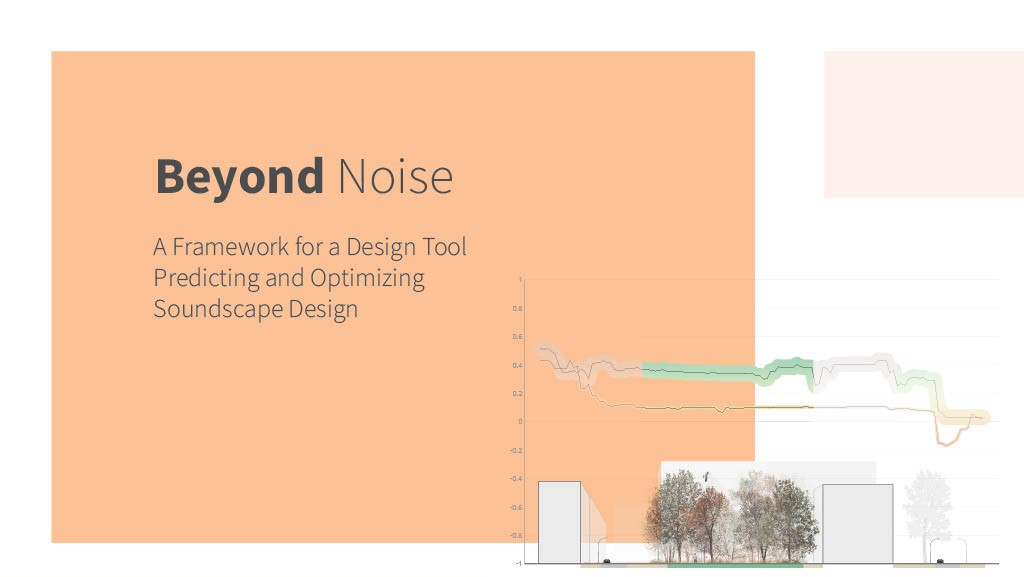
APA: Smit, N.V. (2024). Beyond Noise – A Framework for a Design Tool Predicting and Optimizing Soundscape Design [Master thesis, TU Delft]. https://resolver.tudelft.nl/uuid:548e1fbe-f65d-48a3-8cb8-43e6da9c7dfb
Here you can find the repository of the master thesis: Beyond Noise – A Framework for a Design Tool Predicting and Optimizing Soundscape Design
Project Information
- Title: Beyond Noise – A Framework for a Design Tool Predicting and Optimizing Soundscape Design
- Author(s): Niroda Smit
- Year: 2024
- Link: https://resolver.tudelft.nl/uuid:548e1fbe-f65d-48a3-8cb8-43e6da9c7dfb
- Type: Master thesis, Building Technology
- ML tags: Prediction model, Optimization
- Topic tags: Soundscape, Soundscape design, Machine Learning, Acoustic
Thesis: Beyond Noise – Smit 1/1
Technical Aspectslink copied
In thesis a framework for a designtool is proposed. The design tool using a machine learning model to predict values related to the soundscape quality in regards to the built environment.
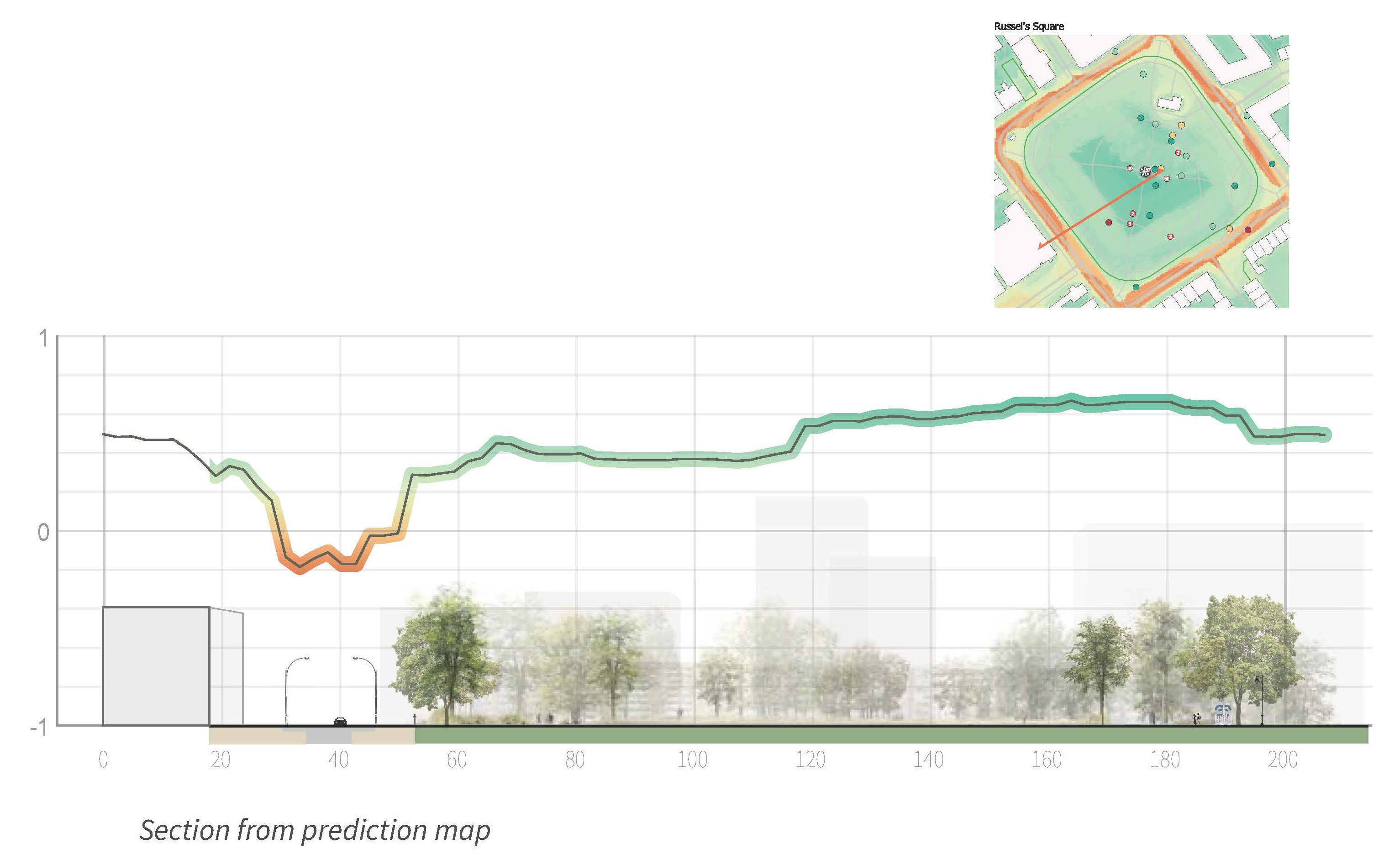
Software & plug-ins used
- QGIS was used as a base program in creating the design tool. This is an opensource free program suitable for urban and geographical analysis, and works well in visualizing datasets in spatial settings. Because this spatial context was central to this thesis the design tool is created in QGIS.
- Python was used to do the statistical analysis of the dataset, and to make the dataset suitable to load into QGIS
- QGIS quickOSM was used to load in the roads, buildings and parks. Different plugins in QGIS were utilized to create the maps that are the underlayers for the machine learning model. (Proximity raster, visibility analysis)
- The Pycaret Library was used find the most suitable machine learning model.
- The QGIS python plyugin and library were used to train the model inside the QGIS model. The Random Forest Regressor was used.
- Python and the QGIS python library were used to create a plugin that with the input data and the trained model predicts a score for the area.
- Additionally: NumPy, Pandas, SciPy, Scikit
Design Workflow
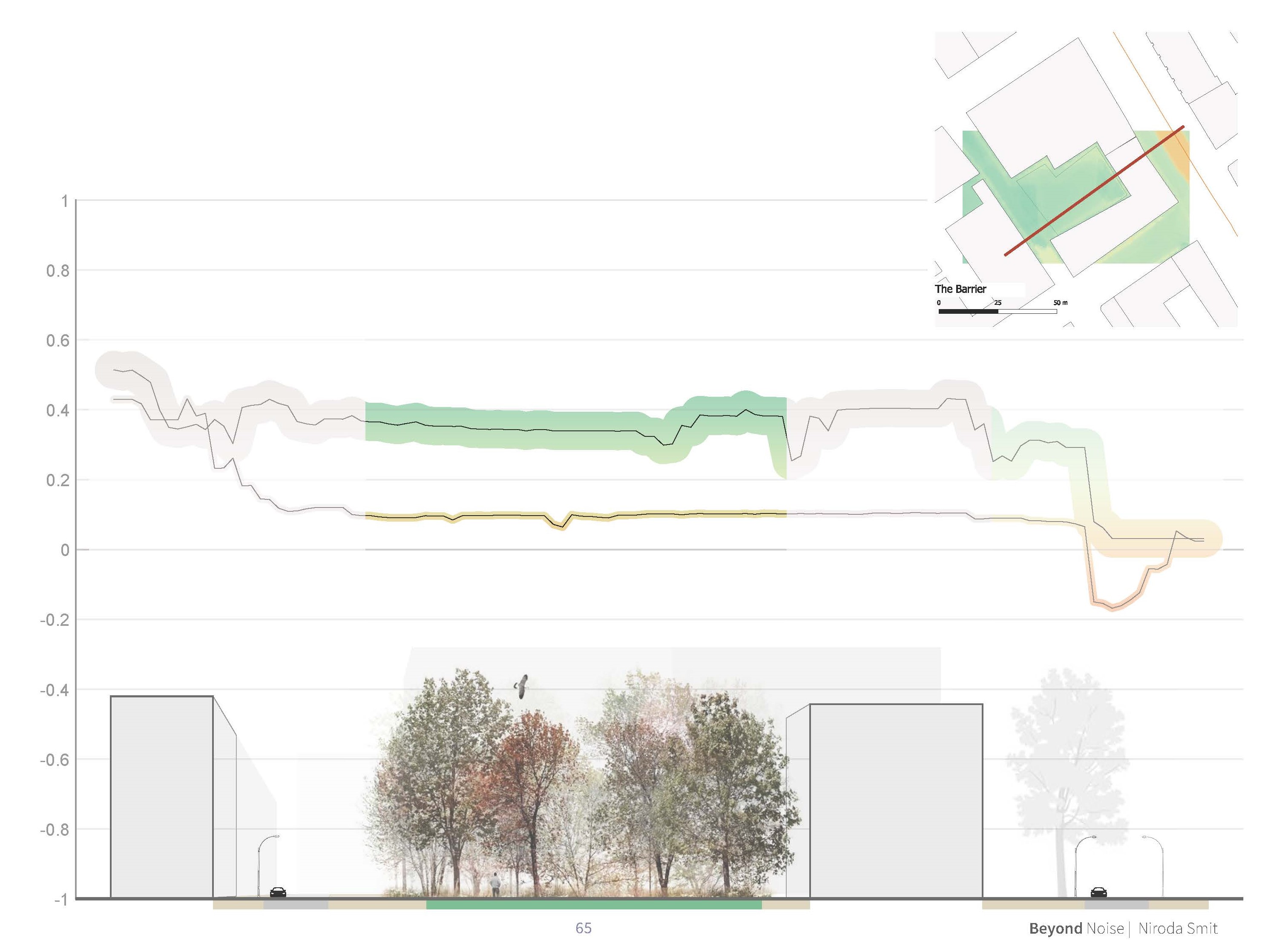
The Beyond Nosie tool fits into the architectural workflow, because it allows to evaluate a certain aspect of the design, which then can be reiterated if needed. It can be used in different scales. The smallest scale is the street where it can predict values very locally. The largest scale, the district/city scale. In this scale samples can be taken in different areas, to predict and analyze what the soundscape quality is in different places. The tool can be used to predict and optimize these values through different iterations.
ML-workflow
To create the framework for the design tool the following steps were followed:
- Create an input dataset. This included:
- data on soundscape quality/ evaluation
- spatial features taken from OSM
- Statistical analysis within the original dataset and the expanded dataset to ensure the validity of the data
- Choice of ML
- Through PyCaret, find the best performing machine learning model, and choose the most optimal one. Here a Random Forest Regressor was chosen
- Training the ML
- Inside the QGIS python plugin create a script that trains the chosen ML model of the dataset
- Build a QGIS plugin with the QGIS classes that uses the machine learning model to predict the soundscape quality for new designs.
- Input data for this included, information of the urban context taken from OSM or from design drawings.
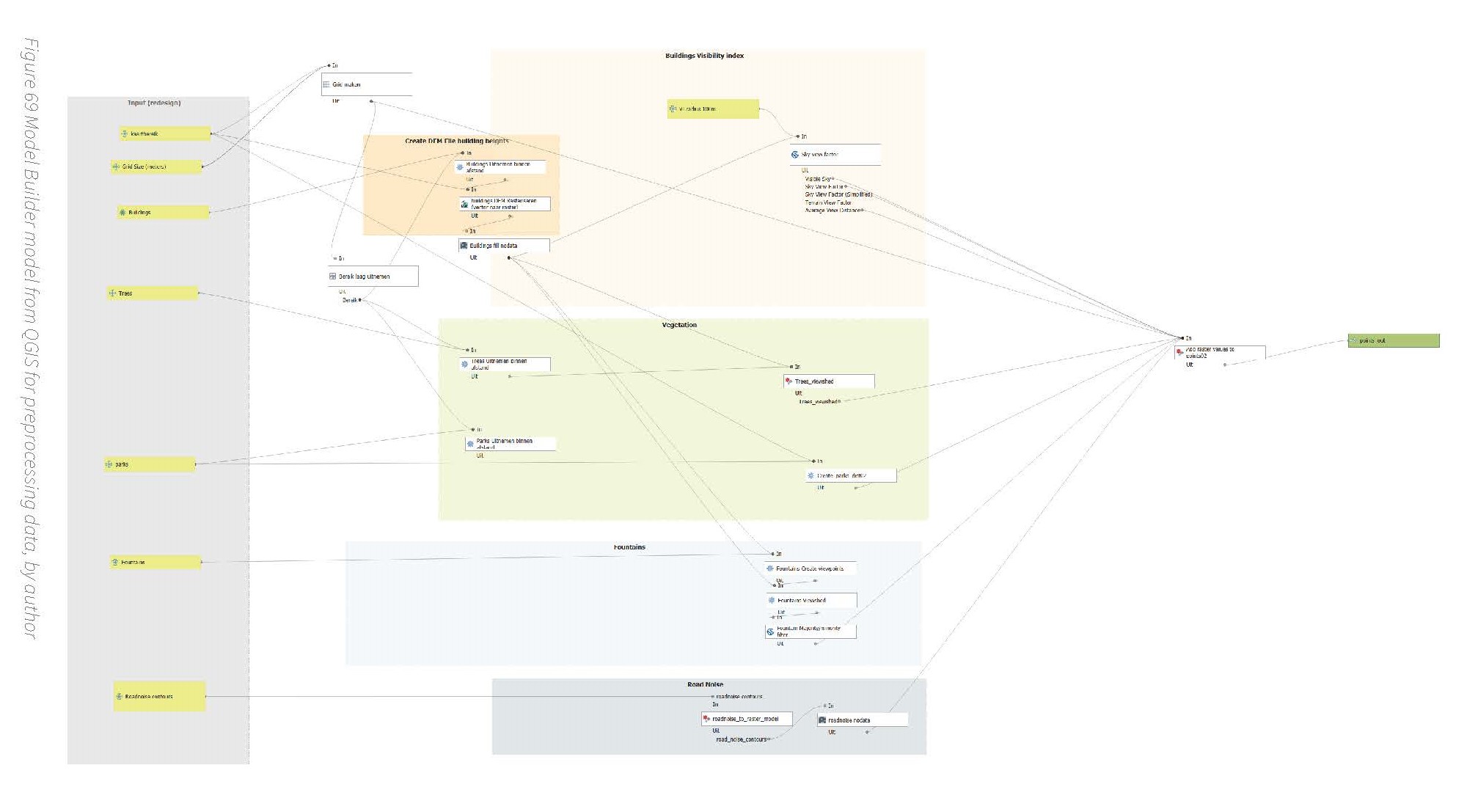
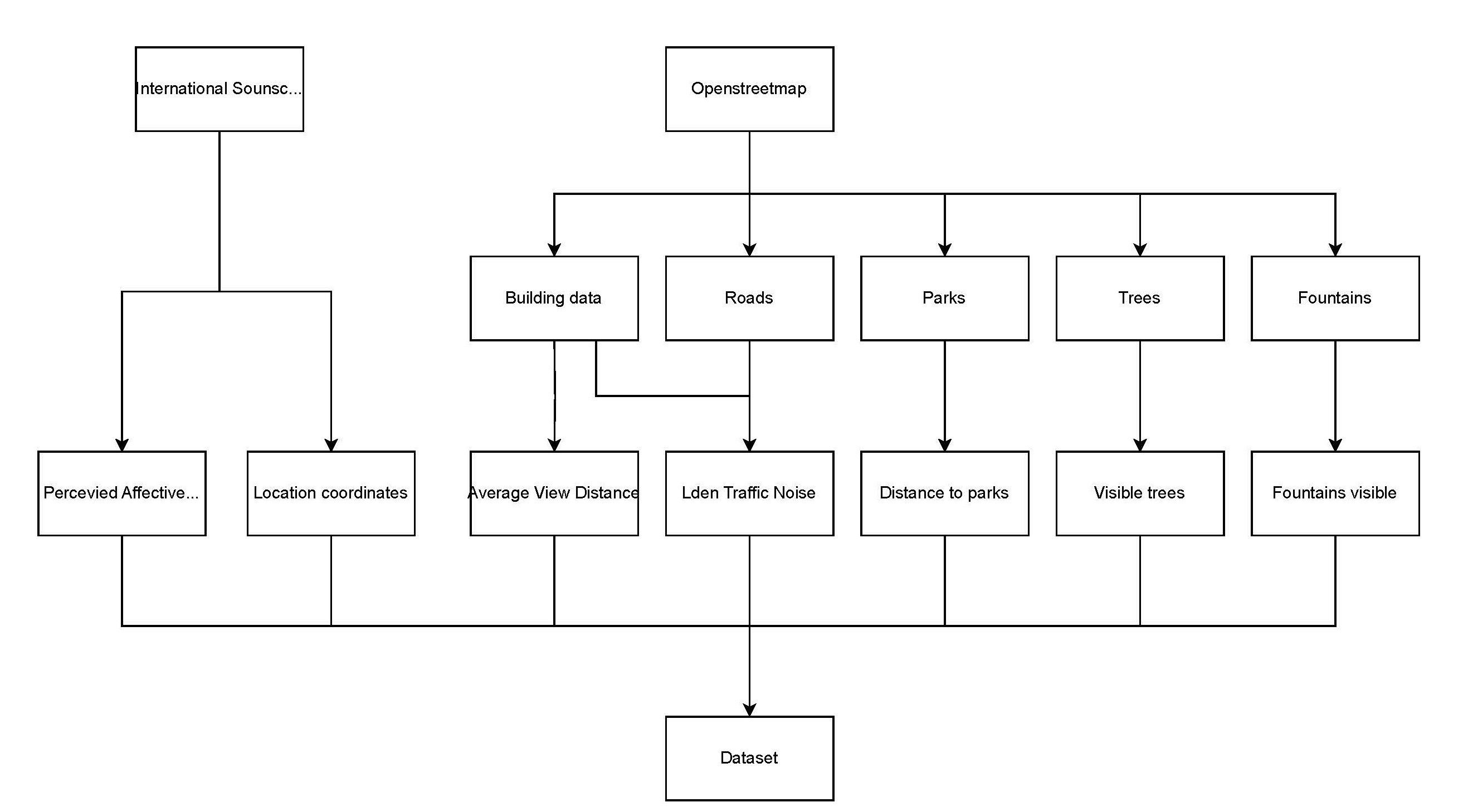
Write your feedback.
Write your feedback on "Thesis: Beyond Noise – Smit"".
If you're providing a specific feedback to a part of the chapter, mention which part (text, image, or video) that you have specific feedback for."Thank your for your feedback.
Your feedback has been submitted successfully and is now awaiting review. We appreciate your input and will ensure it aligns with our guidelines before it’s published.
